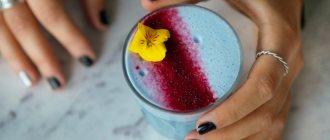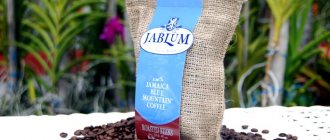Orange, nut, banana, honey raf - variations of the classic Russian coffee drink. Its connoisseurs never tire of experimenting and inventing new original flavors of familiar coffee. They add spices, syrups, alcohol, and sweets. The milk component of the coffee cocktail softens the strength, and the additives sweeten and dilute the everyday aroma. It is important to follow the proportions and rules in order to use recipes at home.
Birth of a masterpiece
When and where was the recipe for a drink born, the popularity of which is much higher than that of ordinary cappuccino? In the nineties of the last century, a small coffee shop “Coffee-Bean” was hidden near the Moscow metro station “Kuznetsky Most”. It was distinguished by its work in the American style; foreign guests often came in for a cup of espresso or cappuccino. At that difficult time, the owners of the coffee shop never ceased to surprise regulars with the available assortment of invigorating drinks.
After a while, the coffee shop acquired regulars; it was a place for them to spend a comfortable time and taste interesting types of coffee. One of these guys, his name was Rafael, who did not like the cappuccino of the local barista, asked him to prepare something exotic and unique for him. This is how the unique Raf coffee came into being, obtained by whipping espresso with cream and vanilla sugar. The visitor was delighted with the completed order and became a frequent visitor to Coffee Bean. The drink was loved by Rafael's friends and colleagues, and soon it received the name raff coffee. Surprisingly, raf coffee soon won gourmets not only in Moscow and Russia, its fame spread throughout the world.
Making pumpkin spice cocktails
Coffee and spices are a very tasty combination. If you add pumpkin, the latte drink will become unusual and original.
- 50 grams of pumpkin pulp should be baked in the oven.
- Blend it to make a puree.
- Brew espresso coffee.
- Add cinnamon, grated ginger root, and nutmeg to heated milk (150 ml). Everything in bits.
- We heat the milk again, but with added spices. We send pumpkin puree there. Mix.
- Add vanilla syrup (20 ml). Mix.
- We pour coffee.
- Add milk with all ingredients.
- Whipped cream on top.
This drink gives those who try it an unimaginable feeling of pleasure. This is a pleasant and very unusual tasting cocktail.
Raf coffee in a classic interpretation
More than 20 years have passed since the recipe was created, but, in principle, it has not changed. Although numerous variations of the recipe exist.
The classic includes the following ingredients:
- you will need classic espresso - 25 ml;
- granulated sugar and vanilla sugar are needed - 5 g each;
- low-fat cream in the amount of 100 ml;
- cinnamon powder in the amount of 1 g.
When starting to prepare classic raf coffee, you need to brew double espresso and mix the remaining ingredients listed above in the pitcher. Then combine everything and beat until you get a fluffy, dense foam. Then the drink is poured into the heated cup (you can add a little cinnamon to it).
Making iced latte
Ice is translated from English as ice. Therefore, such drinks are good in hot weather.
If you have a shaker, fine; if not, a jar with a tight lid will do.
- Fill the container ¼ with ice.
- We brew strong espresso. Pour the coffee in there too. And milk with vanilla syrup (if you want), about 20 ml.
- Shake the jar until the ice melts.
- Pour everything into glasses.
Lavender raff coffee
This recipe requires all the same ingredients, only the cinnamon should be replaced with lavender flowers, you need to add one spoon. Coffee is prepared in a cezve over low heat. You need to grind the sugar immediately with the lavender flowers and add everything to the drink, add heated cream, stir and keep on the stove for another two minutes.
To obtain a fluffy foam on the coffee, beat it with a blender. The drink should be immediately poured into cups or glasses and served until the beautiful dense foam settles.
If you brew honey raff coffee, you do not need to add sugar, but honey should be added before the mixture needs to be whipped. A slice of lemon or lime is suitable for garnishing the finished coffee.
Learning to whip a dairy product correctly
This is one of the conditions to get a latte with an original taste.
Frothing milk using a coffee machine:
- Heat the milk to 70-75 degrees. It should not boil, and pour it into a cup.
- Turn on the steam tap option, a few seconds are enough.
- We load the steam tap into the milk product and activate the “steam” mode. It takes 3-5 seconds. We do 3-4 circles. We lift the tap on the right from bottom to top, then from top to bottom, and so on for 10 seconds.
- Place a container of milk and let it steam. This takes 1-2 seconds.
- After foam has formed, turn off the tap.
Beat the dairy products using a mixer whisk.
- We begin to work with low amplitude speed.
- Dip the whisk into the heated milk.
- We tilt the container towards us.
- Whisk in different directions with the whisk.
We use dishes with high sides so that there are no strong splashes when whipping.
We learned how to make foam. Let's move on to the recipes.
Rough coffee with a sprig of lavender
Lavender raf coffee is gaining popularity every day. To be on trend, you need to learn how to cook it masterfully.
You will need for one serving:
- 35 ml. freshly brewed espress;
- 100 ml. low-fat cream;
- 5 g granulated sugar;
- 5 g vanilla sugar;
- ground lavender;
- sprig of lavender.
Preparation:
- Brew a drink, it doesn’t matter what you use, it can be a coffee machine, a French press or a cezve. An extreme option involves adding granulated sugar, vanilla and ground lavender directly to the Turk.
- If the drink was not prepared in a coffee machine, it should be strained.
- Warm the cream in advance using an electric stove or microwave.
- Pour cream into the prepared coffee.
- Get the desired foam by using a cappuccino maker or mini-mixer.
- Pour lavender coffee and decorate with a prepared lavender branch.
Almond milk latte recipe
The cocktails have a spicy aroma. The spiciness comes from the addition of tangerine slices and chili. It produces an unusual aftertaste. Taste this spicy drink. Such latte recipes can only cause delight.
- Peeling the tangerine. We divide into slices.
- Pour 150 ml into a saucepan. almond milk, with the addition of: cinnamon, vanilla syrup, ground chili.
- Let's cook. Add the tangerine with the peel there. Cook for 5 minutes. We don't boil.
- We brew espresso.
- Strain the mixture with tangerines.
- Discard the pulp and skin.
- The result is a milky spicy mixture with a spicy-citrus taste.
- Beat the mixture. You should get foam.
- Reheat the coffee again.
- Pour espresso into the serving bowl first, then the milk mixture. Decorate with cinnamon sticks. We drink through straws.
Main Ingredients
Chai is usually made using 5 standard spices and optional black tea leaves. The five standard spices are cardamom, ginger, black pepper, cloves and cinnamon. Masala chai is a special drink, the taste of which can be changed depending on personal preferences. Many also add anise, ground nutmeg or coriander seeds to it. You can use any spices you like, but be sure to include the top 5 to create the most traditional flavor.
The addition of tea leaves makes this drink a good alternative to coffee in the morning. Black tea contains natural caffeine, which can quickly wake you up and help you concentrate. Traditional recipes call for Indian varieties such as Darjeeling and Assam. Sri Lankan Ceylon tea can also be used, as can Chinese black tea if you prefer those varieties. Whole leaf varieties are preferable to packets, but the latter can always be used if you are short on time.
Hazelnut latte recipe
These are not only tasty, but also satisfying cocktails. Need a snack? Make this cocktail. It is prepared as simply as all other types of lattes.
- Take peeled hazelnuts and fry them. 30 grams is enough.
- Grind the nuts using a blender.
- Make a mixture of some nuts, milk and 1 tsp. condensed milk
- We put it on the fire, but do not bring it to a boil.
- Whisk.
- Pour into glasses
- Pour in the brewed espresso.
- Decorate with nuts.
Enjoy the prepared cocktail using straws.
Singaporean cuisine - culinary eclecticism
First, imagine: the area of Singapore is only 725 km² - three Singapores could fit in Moscow. Several gastronomic traditions coexist peacefully in a small area - an amazing taste mix of Chinese, Indian, Malay and Indonesian cuisines. There is also Peranakan cuisine. Her recipes were invented by the Nyonya, descendants of mixed marriages between Chinese and Malaysians. To keep Asia from feeling lonely, English and Portuguese dishes added a European flavor. So Singaporean cuisine is one of the most interesting in the world.
Forbes magazine's ranking of the world's healthiest cuisines placed Singapore's national cuisine in second place, only ahead of Japan. The rating takes into account the average life expectancy (in Singapore - 82 years), the percentage of overweight people - 1.8%, the quality of products and how healthy dishes make up the residents' diet.
The culinary kaleidoscope arose out of geography and economics. Singapore was a British colony, and in the 19th century the British decided to make it a trading hub. Thousands of emigrants from all over Asia came to the port country. They all brought with them a piece of home - national dishes.
This is where Singapore's street food was born, bright, noisy and festive. Cooking food and selling it from stalls was the easiest and most obvious way to earn money. In the 70s of the last century, they decided to streamline all these countless stalls a little. Special markets called Hawker were built, the prototype of today's food courts. The kiosks are placed in one space, with tables in the center. Singapore's feasting culture is something the world should learn from. Many nations, different religions - completely different people often gather at one table. A shared meal unites and takes into account the traditions of Christians and Muslims, vegetarians and meat-eaters. The basis is respect for any person and his views.
What do they eat?
Like other tropical countries, there is a lot of fruit here. The national fruit of Singapore, or the king of fruits, is the durian. Quite attractive in appearance, with spines resembling a hedgehog and with delicate, creamy yellow flesh, durian emits a very specific aroma. Such that the fruit was even banned from being transported on public transport and in elevators.
After fruits, the second most popular product in Singaporean cuisine recipes is fish and seafood, including crabs, stingrays, lobsters, shrimp, and squid. They eat different meats, but taking into account their beliefs: Muslims do not eat pork, and Hindus do not eat beef. But chicken and duck are universally loved. The most common side dish is rice, which is understandable for Asian gastronomy. Lots of vegetables and legumes, they usually go into soups, as a component for noodles or in curries.
The most unusual use of legumes in Singapore is in the iced kachang dessert. The original recipe, created in the mid-20th century, was a mixture of crushed ice and pureed red beans. Just beans - this is the translation from the Malay word kachang. Nowadays, not only beans, but almost any vegetables and fruits are mixed with ice. For beauty and taste, the dessert is topped with melted chocolate, colorful sweet syrups, condensed milk or coconut cream. The right ice kachang, as the locals say, should melt pleasantly in your mouth and not be so cold that your brain freezes.
What are we trying?
Chili crab - blaze like a Chinese dragon
In fact, the fieryness of a dish depends on the mood of the cook. Some people really spice up the sauce with all the chili pepper. In restaurants designed for tourists, spiciness is observed in moderation. Chili crab is a rare case when a dish has an exact history of its creation. In 1956, Lim Chu Ngee, a street food vendor, wanted to offer his customers something new and asked his wife to come up with a recipe using crab. Sher Yam Tan plunged into the abyss of experiments. Since crabs were traditionally steamed, she decided she needed to change the neutral flavor to a more vibrant one. Tomato paste, garlic, rice vinegar and chili pepper were used. The sauce became the secret feature of the chili crab. To ensure that not a single drop of the savory gravy is wasted, the crab is accompanied by mantou buns, which are dipped into the sauce. And yes, you only need to eat the dish with your hands.
Chili crab included in the list of the 50 most delicious dishes in world cuisine
The culinary novelty made Lim Chu Ngi's stall famous so much that the couple soon opened the Palm Beach Seafood restaurant. Although chilli crab is prepared everywhere in Singapore, the true taste can only be experienced in this establishment.
Toast kaya - traditional Singaporean breakfast
The main secret of this delicate caramel-colored toast is kaya jam made from coconut milk, sugar and eggs. It's spread between two pieces of toasted bread, ideally charcoal-grilled, but a toaster will work too. Singaporeans were introduced to this jam by Chinese migrants. Chinese chefs borrowed the idea of having toast and jam for breakfast from the British, on whose ships they worked as cooks, and brought it with them to their new place of residence - Singapore. However, ordinary fruit jams have been replaced with a more exotic option - made from coconut. Toast is eaten with boiled eggs, scrambled eggs or scrambled eggs.
Bak kut teh rib soup - try a new type of tea
The rich soup bak kut teh literally means tea made from pork ribs. The dish comes from China; strong oolong tea was served with it - for better digestion, since the soup is very fatty. This is how tea migrated to the name.
Legend has it that the soup recipe appeared completely by accident. One day a very poor and very hungry man walked into a butcher's shop and asked him to feed him something. The butcher threw into the pan some pork ribs and a couple of the cheapest spices - pepper and anise.
The soup is cooked, or rather, simmered for a very long time over low heat. A lot of aromatic herbs and spices are put into the broth, including nutmeg, cloves, garlic, coriander, fennel, cinnamon, anise, and soy sauce. In addition, tofu and various vegetables are added, the composition of which may vary. But rice or noodles are a mandatory accompaniment to the soup.
Bi Hong soup - the fish is the head of everything
Toman fish head (snakehead fish) and thin rice noodles are the two main components of this original soup. If you are an impressionable person and a fish head in soup scares you, there are more humane options - with fish fillet. The recipe appeared in the 20s of the last century. These were not the happiest years in the history of Singapore; there were few fish, so they were used entirely. And it spoiled quickly in a tropical climate - so it was pre-fried to remove the smell. Other ingredients may include vegetables and even fruits, eggs, milk - including condensed milk, and tofu.
Curry laksa is the reason for the chefs' war
One of the most common and beloved Peranakan dishes in the country. Seafood, usually shrimp, and rice noodles are served in a thick coconut sauce rich in spices. Sometimes chicken is added to the ingredients. Curry gives the dish an unusual red-red color, which in Singapore is called the color of a blazing sunset. If the cook does not skimp on spices, your mouth will also burn, but there is always the opportunity to order a milder option. There are quite a few types of laksa, and chefs constantly prove to each other that their recipe is the best. There is even a competition between street vendors to determine the most delicious version of laksa. It's called Laksa war - probably what Star Wars fans called it.
Dim sum - dumplings in the Chinese style
Steamed or fried, round dim sum is also a heritage of Chinese cooking. Various fillings: meat, fish, vegetables are hidden in the thinnest, most tender rice dough. Dim sum, which literally translates as “to touch the heart,” is served in sets in round boxes. Dim sum is usually eaten in the first half of the day and washed down with the same way as in the homeland - pu-erh tea.
Sate is a Singaporean type of kebab.
Mini-kebabs are prepared from almost any type of meat. In general, the meat is not the main thing in them, but the main thing is the turmeric-based marinade and peanut sauce to accompany it. They are the ones who play the first violin in this dish. The satay is strung on thin bamboo skewers and fried on the grill for just a couple of minutes.
Fried Carrot Cake - When the name doesn't live up to expectations
If you thought you were going to try an unusual dessert, you will be disappointed: there will be no carrots or pie. There will be fried daikon, egg and boiled rice flour dumplings. The dish can be black or white, which depends on whether sweet soy sauce is added to it or not. There is still something of the pie: the ingredients glued together in the omelette are cut into square or rectangular pieces, so the presentation form still makes this dish similar to baked goods. The prototype was a Chinese dish, the so-called starch cake, the ingredients of which were shrimp, rice flour and eggs. In the 60s of the twentieth century, one of the street vendors in Singapore decided to make an upgrade: he removed seafood from the recipe and added daikon, that is, Chinese radish. In this form, the dish very quickly gained mega-popularity.
Roti prata and naan - flatbreads with Indian roots
If in India unleavened flatbreads are eaten mainly to tame the spiciness of local cuisine, then in Singapore it is a fast and popular type of fast food. They are served with bowls of different sauces for dipping, or filled with fillings, such as cheese or egg based, curry or herbs, legumes or meat. There are options with banana, ice cream or chocolate - for those with a sweet tooth.











